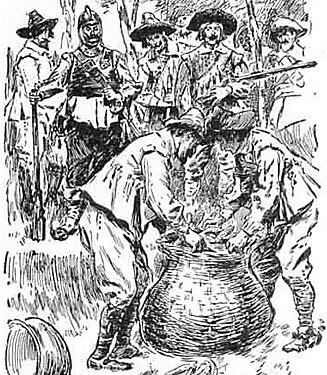 Stories of American Adventure
Stories of American Adventure
Stories of American Adventure
Stories of American Adventure



 Stories of American Adventure
Stories of American Adventure
Stories of American Adventure
Stories of American Adventure

Study the lesson for one week.
Over the week:
Activity 1: Narrate the Lesson
Activity 2: Draw the Indian Corn from the Story

Click the crayon above. Complete page 11 of 'Second Grade American History Coloring Pages, Copywork, and Writing.'
Draw the Indian corn described in the story.

Activity 3: Create a Comic Showing How to Grow Indian Corn

Click the crayon above. Complete page 12 of 'Second Grade American History Coloring Pages, Copywork, and Writing.'
Create panels of a comic strip showing how American Indians grew corn.
Activity 4: Complete Coloring Pages, Copywork, and Writing
